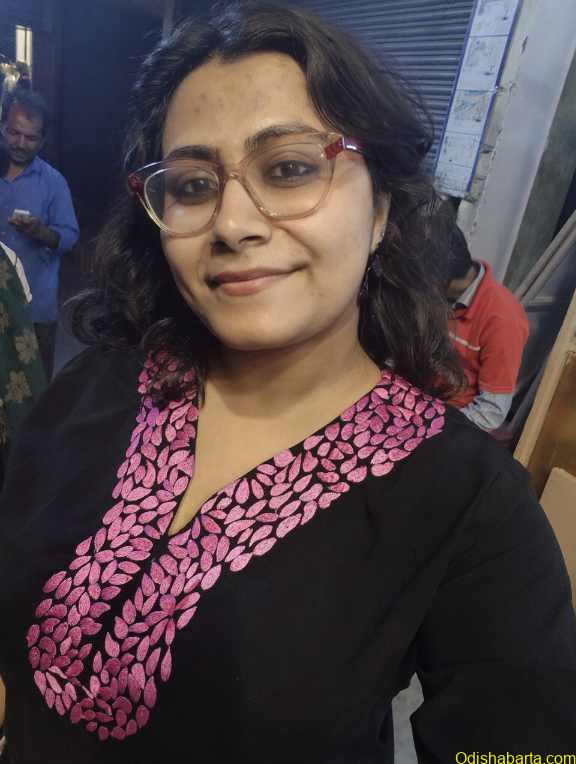The Paradox of Female Sexualization: When Every Behaviour is Sexualized yet Sexual expression remains Taboo

Pallavi Mishra
The Paradox of Female Sexualization: When Every Behaviour is Sexualized yet Sexual Expression Remains Taboo.” The article explores how women’s every action—whether shy, bold, or indifferent—is sexualized, while their own expression of desire is policed and shamed, especially in the context of Indian media and culture. As a gender-focused researcher and writer with experience in analysing social narratives and media representation, I bring both critical insight and lived understanding to this topic.
Women are always seen through camera that has a lens full of lust. From the sexualized lens a woman’s smile is often misinterpreted as flirtation, her silence as seduction, and her shyness as an invitation. Surprisingly, these same people cannot tolerate a woman who claim their sexuality and take the control of it. These women are often policed and punished for expressing desires openly. The hyper sexualization of women along with the denial of their sexual agency is not just a cultural contradiction but is also a powerful tool of control and reestablish patriarchal norms.
Historical and Theoretical Roots
Mary Wollstonecraft’s A Vindication of the Rights of Woman (1792) challenged the notion that a woman’s value lies in beauty or charm which reduces woman’s ability to think and question. Many other have feminist scholars, including Simone de Beauvoir, also explained how the male gaze defines women as an object to be viewed, desired, and evaluated.
Laura Mulvey’s essay, Visual Pleasure and Narrative Cinema (1975), further illustrates how women are framed in visual culture as passive subjects to fulfil male desire. In cinema and advertising of all kinds and languages, this gaze in all shots and angle objectifies women’s bodies while denying them complex emotional or sexual autonomy.
Sexualization in Contemporary Media
In Indian cinema and advertisements, women are consistently portrayed in ways that reduce them to symbols of temptation. Bollywood often depicts the heroine as a mix of innocence and seduction. It is not just the item numbers but the existence of a female protagonist not as a main character but rather a subject circling around the male’s desire.
Movies obsession with navel, breast, buttocks, cleavage and lips often reestablishes the idea of woman being an object only to cater to man’s desire and have no desire of her own. This unnecessary focus on eroticizing women’s body also brings in body dysmorphia and insecurity amongst young girls.
The female lead is often shy of her desire which applauded but the girl dancing on item songs with male protagonist is often seen as a loose woman. A woman supressing the desire is celebrated but in contrast, the item girl, who dances demanding her own desire, is ridiculed and shamed. Her body is consumed, but her agency is denied. This sharp divide reflects a larger cultural discomfort with women who express autonomy over their sexuality.
Advertisements too often rely on the trope of the “sexy woman” to sell products. Products like headphone, sports shoes, perfume, even bikes use women’s bodies as a prop to sell the products.
Shaming Sexual Agency
While a sexy woman is desirable at the places, but the expression of desire is belittled. A woman who dresses boldly is often labelled as “asking for it” is an old phrase that continues to be a nuance that woman deal every day. Even people with liberal thoughts do not buy the idea of women controlling, demanding and going around with her sexual desires rather chose silence or judgment.
Whilst upper caste and class has used women for their sexual desire to their convenience but often consider Dalit women, being hypersexual and “available,” diminishing the colonial and casteism rooted in control. Meanwhile, upper-caste women are expected to uphold “honor,” with their sexuality tightly guarded and controlled. Queer women and transwomen are often completely excluded from conversations about desire, just fanaticized but not entertained.
The Impact on Mental Health and Identity
The hypersexualization of women’s behaviour without the freedom to explore their sexuality freely leads to cognitive dissonance. Women grow up confused about what they are allowed to feel or express. According to the American Psychological Association’s report on the sexualization of girls contributes to body image anxiety, eating disorders, depression, and difficulties in forming healthy relationships.
Very early in their life girls rely on being desired which is safe and socially accepted—but to desire for yourself is to be shamed. This confusion creates deep-seated guilt and internalized misogyny.
Shyness, Dominance, and the ‘Dumb’ Girl Trope
All the behaviour of women are always shown to be rotating around sexuality.Women who are disinterested in sexuality are not spared; they are often pathologized as “not yet awakened” or “not met the right man yet”.
The “dumb girl” trope is another powerful tool. Films and ads that portray women as naïve or childish often mask this infantilization as charm. Films often have the sentence where in any crisis woman turns to man and asks, “What do we do now?” Although women function more rationally in crisis or else why is there idea glass cliff exist at all.
A woman with a voice and demands are often targeted and concluded with abuses that are sexual in nature and repeatedly putting woman’s other characteristics just to the box of bedroom activities and sexual exploitation.
Towards Liberation: Feminist Responses
Intersectional feminists have pushed for a nuanced understanding of sexuality. Bell hooks argued for the importance of pleasure, desire, and agency in liberation and Kimberlév Crenshaw emphasized how race, class, and gender intersect in these discussions. Indian feminists like Nivedita Menon and Kavita Krishnan have also challenged the moral policing of women and called for radical ownership of female bodies and desires.
The solution is not to hide or censor but to challenge the gaze itself, to redefine how we view women not as bodies to be consumed, but as full humans with desires, flaws, power, and autonomy.
Conclusion
This contradiction of being sexualized yet expression of sexuality is patronized serves a purpose: it keeps women confused, ashamed, and controlled. By recognizing, naming, and challenging this paradox, we can begin to dismantle it. The lens of lust must get to the background and let woman flourish with other parts of them being celebrated and their expression desire being welcomed. It is the time to create a world where a woman’s body is her own, not a battleground of desire and denial.









